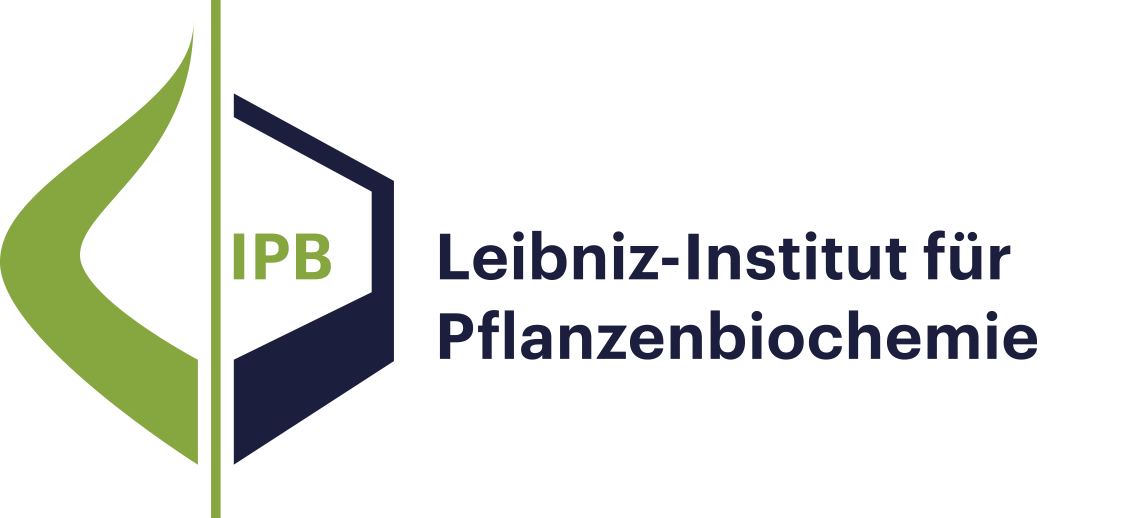Publikationen Program Center MetaCom
- Results as:
- Print view
- Endnote (RIS)
- BibTeX
- Table: CSV | HTML
Publications
Publications
Publications
Publications
Diese Seite wurde zuletzt am 03 Sep 2024 geändert.
Research Mission and Profile
Molecular Signal Processing
Bioorganic Chemistry
Biochemistry of Plant Interactions
Cell and Metabolic Biology
Independent Junior Research Groups
Program Center MetaCom
Publications
Good Scientific Practice
Research Funding
Networks and Collaborative Projects
Symposia and Colloquia
Alumni Research Groups
Publikationen
Publikationen Program Center MetaCom
Publications
The exporter of the auxin precursor indole-3-butyric acid (IBA), ABCG36/PDR8/PEN3, from the model plant Arabidopsis has recently been proposed to also function in the transport of the phytoalexin camalexin. Based on these bonafide substrates, it has been suggested that ABCG36 functions at the interface between growth and defense. Here, we provide evidence that ABCG36 catalyzes the direct, ATP-dependent export of camalexin across the plasma membrane. We identify the leucine-rich repeat receptor kinase, QIAN SHOU KINASE1 (QSK1), as a functional kinase that physically interacts with and phosphorylates ABCG36. Phosphorylation of ABCG36 by QSK1 unilaterally represses IBA export, allowing camalexin export by ABCG36 conferring pathogen resistance. As a consequence, phospho-dead mutants of ABCG36, as well as qsk1 and abcg36 alleles, are hypersensitive to infection with the root pathogen Fusarium oxysporum, caused by elevated fungal progression. Our findings indicate a direct regulatory circuit between a receptor kinase and an ABC transporter that functions to control transporter substrate preference during plant growth and defense balance decisions.
Publications
In Eco-Metabolomics interactions are studied of non-model organisms in their natural environment and relations are made between biochemistry and ecological function. Current challenges when processing such metabolomics data involve complex experiment designs which are often carried out in large field campaigns involving multiple study factors, peak detection parameter settings, the high variation of metabolite profiles and the analysis of non-model species with scarcely characterised metabolomes. Here, we present a dataset generated from 108 samples of nine bryophyte species obtained in four seasons using an untargeted liquid chromatography coupled with mass spectrometry acquisition method (LC/MS). Using this dataset we address the current challenges when processing Eco-Metabolomics data. Here, we also present a reproducible and reusable computational workflow implemented in Galaxy focusing on standard formats, data import, technical validation, feature detection, diversity analysis and multivariate statistics. We expect that the representative dataset and the reusable processing pipeline will facilitate future studies in the research field of Eco-Metabolomics.
Publications
Bryophytes occur in almost all land ecosystems and contribute to global biogeochemical cycles, ecosystem functioning, and influence vegetation dynamics. As growth and biochemistry of bryophytes are strongly dependent on the season, we analyzed metabolic variation across seasons with regard to ecological characteristics and phylogeny. Using bioinformatics methods, we present an integrative and reproducible approach to connect ecology with biochemistry. Nine different bryophyte species were collected in three composite samples in four seasons. Untargeted liquid chromatography coupled with mass spectrometry (LC/MS) was performed to obtain metabolite profiles. Redundancy analysis, Pearson's correlation, Shannon diversity, and hierarchical clustering were used to determine relationships among species, seasons, ecological characteristics, and hierarchical clustering. Metabolite profiles of Marchantia polymorpha and Fissidens taxifolius which are species with ruderal life strategy (R‐selected) showed low seasonal variability, while the profiles of the pleurocarpous mosses and Grimmia pulvinata which have characteristics of a competitive strategy (C‐selected) were more variable. Polytrichum strictum and Plagiomnium undulatum had intermediary life strategies. Our study revealed strong species‐specific differences in metabolite profiles between the seasons. Life strategies, growth forms, and indicator values for light and soil were among the most important ecological predictors. We demonstrate that untargeted Eco‐Metabolomics provide useful biochemical insight that improves our understanding of fundamental ecological strategies.
Publications
The identification of metabolites by mass spectrometry constitutes a major bottleneck which considerably limits the throughput of metabolomics studies in biomedical or plant research. Here, we present a novel approach to analyze metabolomics data from untargeted, data-independent LC-MS/MS measurements. By integrated analysis of MS1 abundances and MS/MS spectra, the identification of regulated metabolite families is achieved. This approach offers a global view on metabolic regulation in comparative metabolomics. We implemented our approach in the web application “MetFamily”, which is freely available at http://msbi.ipb-halle.de/MetFamily/. MetFamily provides a dynamic link between the patterns based on MS1-signal intensity and the corresponding structural similarity at the MS/MS level. Structurally related metabolites are annotated as metabolite families based on a hierarchical cluster analysis of measured MS/MS spectra. Joint examination with principal component analysis of MS1 patterns, where this annotation is preserved in the loadings, facilitates the interpretation of comparative metabolomics data at the level of metabolite families. As a proof of concept, we identified two trichome-specific metabolite families from wild-type tomato Solanum habrochaites LA1777 in a fully unsupervised manner and validated our findings based on earlier publications and with NMR.
Diese Seite wurde zuletzt am 03 Sep 2024 geändert.

